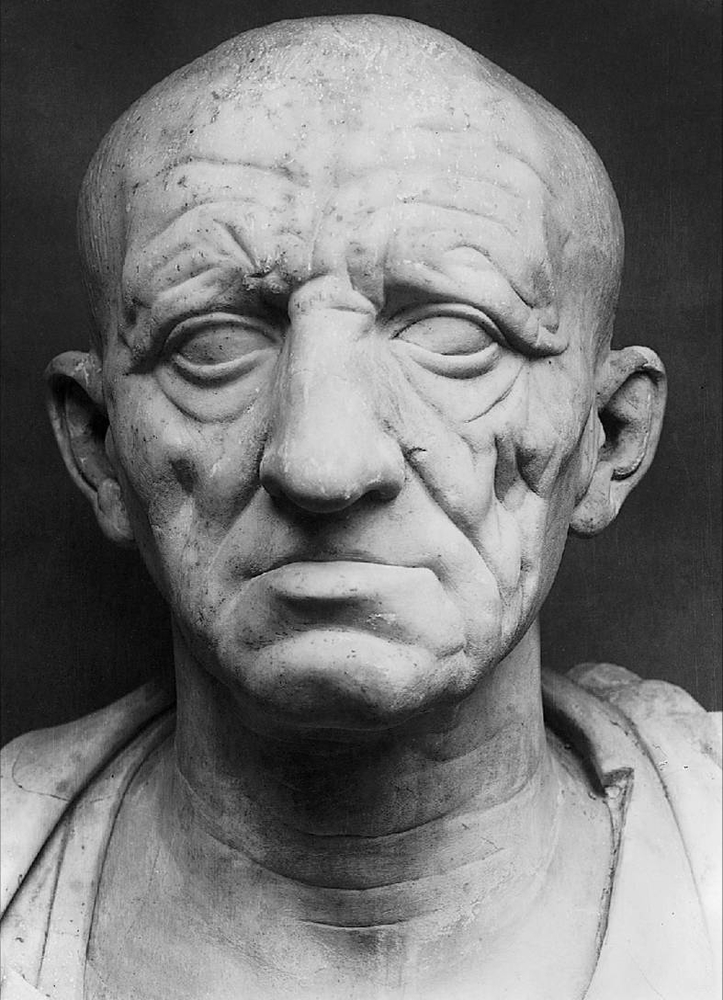The following is an excerpt from "Promenades of an Impressionist" by James Huneker, published in 1910:
Let us suppose that gay old misogynist Arthur Schopenhauer persuaded to cross the Styx and revisiting the earth. Apart from his disgust if forced to listen to the music of his self-elected disciple Richard Wagner, what painted work would be likely to attract him? Remember he it was who named Woman the knock-kneed sex—since the new woman is here it matters little if her figure conforms to old-fashioned, stupid, masculine standards of beauty. But wouldn't the nudes of Degas confirm the Frankfort philosopher in his theories regarding the "long-haired, short-brained, unæsthetic sex," and also confirm his hatred for the exaggerations of poet and painter when describing or depicting her? We fear that Schopenhauer would smile his malicious smile and exclaim: "At last the humble truth!" It is the presentation of the humble truth that early snared the affections of Degas, who has with a passionate calm pursued the evanescent appearances of things his entire life. No doubt death will find him pencil in hand. You think of Hokusai, the old man mad with paint, when the name of Degas is mentioned. He was born in Paris July 19, 1834—his full name is Hilaire Germain Edgard (or Edgar)—and there is one phrase that will best describe his career: He painted. Like Flaubert, he never married, but lived in companionship with his art. Such a mania could have been described by Balzac. Yet no saner art ever issued from a Parisian atelier; sane, clear, and beautiful.
Degas is a painter's painter. For him the subject is a peg upon which to hang superb workmanship. In amazement the public asked: How could a man in the possession of his powers shut himself up in a studio to paint ballet girls, washerwomen, jockeys, drabs of Montmartre, shopgirls, and horses? Even Zola, who should have known better, would not admit that Degas was an artist fit to be compared with such men as Flaubert and Goncourt; but Zola was never the realist that is Degas. Now it is difficult to keep asunder the names of Goncourt and Degas. To us they are too often unwisely bracketed. The style of the painter has been judged as analogous to the novelist's; yet, apart from a preference for the same subjects for the "modernity" of Paris, there is not much in Degas that recalls Goncourt's staccato, febrile, sparkling, "decomposed", impressionistic prose. Both men are brilliant, though not in the same way. Pyrotechnics are abhorrent to Degas. He has the serenity, sobriety, and impersonality of the great classic painters. He is himself a classic.
His legend is slender. Possessing a private income, he never was preoccupied with the anxieties of selling his work. He first entered the atelier of Lamotte, but his stay was brief. In the studio of Ingres he was, so George Moore declares, the student who carried out the lifeless body of the painter when Ingres fell in his fatal fit. There is something peculiarly interesting about this anecdote for the tradition of Ingres has been carried on by Degas. The greatest master of pure line, in his portraits and nudes—we have forgotten his chilly pastiches of Raphael—of the past century, Ingres has been and still is for Degas a god on the peaks of Parnassus. Degas is an Ingres who has studied the Japanese. Only such men as Pollajuolo and Botticelli rank with Degas in the mastery of rhythmic line. He is not academic, yet he stems from purest academic traditions. He is not of the impressionists, at least not in his technical processes, but he associated with them, exhibited with them (though rarely), and is as a rule confused with them. He never exhibited in the Salons, he has no disciples, yet it is doubtful if any painter's fashion of seeing things has had such an influence on the generation following him. The name of Degas, the pastels of Degas, the miraculous draughtsmanship of Degas created an imponderable fluid which still permeates Paris. Naturally, after the egg trick was discovered we encounter scores of young Columbuses, who paint ballet girls' legs and the heads of orchestral musicians and scenes from the racing paddock.
Degas had three painters who, if any, might truthfully call themselves his pupils. These are Mary Cassatt, Alexis Rouart, and Forain. The first has achieved solid fame. The last is a remarkable illustrator, who "vulgarised" the austere methods of his master for popular Parisian consumption. That Renoir, Raffaelli, and Toulouse-Lautrec owe much to Degas is the secret of Polichinello. This patient student of the Tuscan Primitives, of Holbein, Chardin, Delacroix, Ingres, and Manet—the precepts of Manet taught him to sweeten the wiriness of his modelling and modify his tendency to a certain hardness—was willing to trust to time for the verdict of his rare art. He associated daily with Manet, Monet, Pissarro, Whistler, Duranty, Fantin-Latour, and the crowd that first went to the Café Guerbois in the Batignolles—hence the derisive nickname, "The Batignolles School"; later to the Nouvelle Athènes, finally to the Café de la Rochefoucauld. A hermit he was during the dozen hours a day he toiled, but he was a sociable man, nevertheless, a cultured man fond of music, possessing a tongue that was feared as much as is the Russian knout. Mr. Moore has printed many specimens of his caustic wit. Whistler actually kept silent in his presence—possibly expecting a repetition of the mot: "My dear friend, you conduct yourself in life just as if you had no talent at all." Manet good-naturedly took a browbeating, but the Academic set were outraged by the irreverence of Degas. What hard sayings were his! Poor Bastien-Lepage, too, came in for a scoring. Barricaded in his studio, it was a brave man who attempted to force an entrance. The little, round-shouldered artist, generally good-tempered, would pour a stream of verbal vitriol over the head of the unlucky impertinent.
In 1860 or thereabout he visited America, and in New Orleans he saw the subject of his Interior of a Cotton Factory, which was shown as an historical curiosity at the Paris exposition in 1900. While it is implacably realistic there is little hint of the future Degas. The name of the painter was in every French painter's mouth, and the brilliant article of Huysmans concentrated his fame. Huysmans it was who first saw that Degas had treated the nude as Rembrandt would if he had been alive—making allowances for temperamental variations. Degas knew that to grasp the true meaning of the nude it must be represented in postures, movements which are natural, not studio attitudes. As Monet exposed the fallacy of studio lighting, so Degas revealed the inanity of its poses. Ibsen said the stage should be a room with the fourth wall removed; Degas preferred the key-hole through which we seem to peep upon the privacy of his ugly females bathing or combing their hair or sleeping, lounging, yawning, quarrelling, and walking. The simian and frog-like gestures and sprawling attitudes are far from arousing amiable sensations. These poor, tired women, hard-working laundresses, shopgirls, are not alluring, though they are not as hideous as the women of Cézanne or Edvard Münch; but the veracity of the "human document" (overworked phrase!) is there. Charles Morice has said that to Cézanne a potato was as significant as a human countenance. The pattern interested him in both. For Degas the beauty of life lies in the moving line. He captures with ease the swift, unconscious gesture. His models are never posed. They are nature caught in the act. There is said to be a difference between the epidermis of the professional model and the human who undresses only to go to bed. Degas has recorded this difference. What an arraignment of the corset are the creased backs and gooseflesh of his nudes! What lurking cynicism there is in some of his interiors! Voilà l'animale! he exclaims as he shows us the far from enchanting antics of some girl. How Schopenhauer would laugh at the feminine "truths" of Degas! Without the leer of Rops, Degas is thrice as unpleasant. He is a douche for the romantic humbug painter, the painter of sleek bayadères and of drawing-room portraiture.
Pity is deeply rooted in his nature. He is never tender, yet there is veiled sympathy in the ballet-girl series. Behind the scenes, in the waiting-rooms, at rehearsal, going home with the hawk-eyed mother, his girls are all painfully real. No "glamour of the foot-lights," generally the prosaic side of their life. He has, however, painted the glorification of the danseuse, of that lady grandiloquently described as prima donna assoluta. What magic he evokes as he pictures her floating down stage! The pastel in the Luxembourg, L'Etoile, is the reincarnation of the precise moment when the aerial creature on one foot lifts graceful arms and is transfigured in the glow of the lights, while about her beats—you are sure—the noisy, insistent music. It is in the pinning down of such climaxes of movement that Degas stirs our admiration. He draws movement. He can paint rhythms. His canvases are ever in modulation. His sense of tactile values is profound. His is true atmospheric colour. A feeling of exhilaration comes while contemplating one of his open-air scenes with jockeys, race-horses, and the incidental bustle of a neighbouring concourse. Unexcelled as a painter of horses, as a delineator of witching horsemanship, of vivid landscapes—true integral decorations—and of the casual movements and gestures of common folk, Degas is also a psychologist, an ironical commentator on the pettiness and ugliness of daily life, of its unheroic aspects, its comical snobberies and shocking hypocrisies; and all expressed without a melodramatic elevation of the voice, without the false sentimentalism of Zola or the morbidities of Toulouse-Lautrec. There is much Baudelaire in Degas, as there is also in Rodin. All three men despised academic rhetoric; all three dealt with new material in a new manner.
It is the fashion to admire Degas, but it is doubtful if he will ever gain the suffrage of the general. He does not retail anecdotes, though to the imaginative every line of his nudes relates their history. His irony is unremitting. It suffuses the ballet-girl series and the nude sets. Irony is an illuminating mode, but it is seldom pleasant; the public is always suspicious of an ironist, particularly of the Degas variety. Careless of reputation, laughing at the vanity of his contemporaries who were eager to arrive, contemptuous of critics and criticism, of collectors who buy low to sell high (in the heart of every picture collector there is a bargain counter), Degas has defied the artistic world for a half-century. His genius compelled the Mountain to come to Mahomet. The rhythmic articulations, the volume, contours, and bounding supple line of Degas are the despair of artists. Like the Japanese, he indulges in abridgments, deformations, falsifications. His enormous faculty of attention has counted heavily in his synthetical canvases. He joys in the representation of artificial light; his theatres are flooded with it, and he is equally successful in creating the illusion of cold, cheerless daylight in a salle where rehearse the little "rats" and the older coryphées on their wiry, muscular, ugly legs. His vast production is dominated by his nervous, resilient vital line and by supremacy in the handling of values.
The Degas palette is never gorgeous, consisting as it does of cool grays, discreet blues and greens, Chardin-like whites and Manet-blacks. His procedure is all his own. His second manner is a combination of drawing, painting, and pastel. "He has invented a kind of engraving mixed with wash drawing, pastel crayon crushed with brushes of special pattern."



































The library above quotes "Promenades of an Impressionist" by James Huneker, where he quotes the philosopher Shopenhauer describing women as the 'long-haired, short-brained, unæsthetic sex'. It is not clear if Shopenhauer found women unattractive, or if he found them lacking in taste, or both. In any case, Shopenhauer lived alone with his pet poodles, and he and Degas were both mysoginists. Degas often compared the ballerinas he painted to various types of animals, including 'little monkey girls'. Like Shopenhauer, he was, unsurprisingly, a lifelong bachelor.